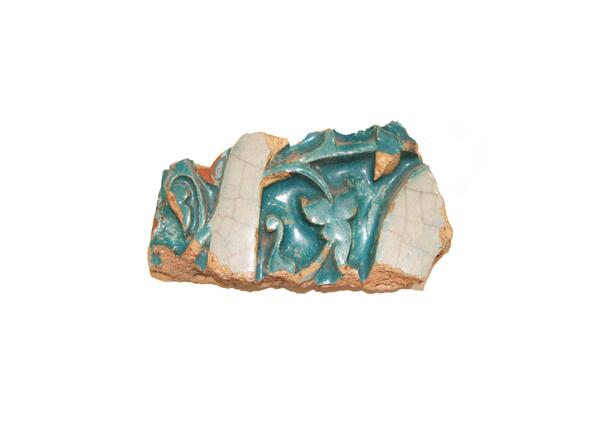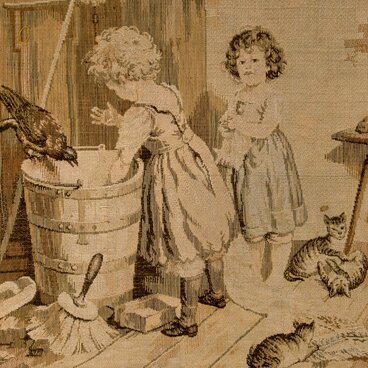The exhibit from the collection of the Volgograd Regional Museum of Local History is an example of a glazed tile, which was made in the 13th–14th centuries. The fragment of an azure-colored ceramic tile, discovered by the researchers, has a traditional glaze for that period.
Experts believe that this piece of ceramics was hand-painted. The artisan used the intricate botanical design, which under the influence of Central Asia became traditional for the architecture of Ulus Jochi, better known as the Golden Horde.
The wall decoration of buildings with tiles was characterized by floral linear patterns and compositions, as well as plant motifs, which looked endlessly repetitive. At the same time, the patterns of painting on the walls of the Golden Horde houses could emphasize the central figure. These could be leaves or stems. Besides, artisans could apply geometric and epigraphic ornaments on tiles. Such methods of decoration were widespread.
The former was marked by geometric shapes, mainly triangles or hexagons, as well as patterns with rhombuses. The latter, epigraphic, was used more often to frame compositions and only rarely contained the main semantic meaning.
The spread of the kashi ceramics in the Golden Horde was connected with the use of transparent glazes, which required a light base. This type of ceramic tile was made from milled siliceous rock, opoka, with the addition of an adhesive compound.
In Central Asia, kashi architectural ceramics were known from the beginning of the 12th century, and their appearance in the Golden Horde can be attributed to the influence of Khorezmian ceramics production.
The Golden Horde gradually developed its own production of the kashi architectural ceramics based on local raw materials. The tiles in the Ulus Jochi were made by captive Russian craftsmen.
Experts believe that this piece of ceramics was hand-painted. The artisan used the intricate botanical design, which under the influence of Central Asia became traditional for the architecture of Ulus Jochi, better known as the Golden Horde.
The wall decoration of buildings with tiles was characterized by floral linear patterns and compositions, as well as plant motifs, which looked endlessly repetitive. At the same time, the patterns of painting on the walls of the Golden Horde houses could emphasize the central figure. These could be leaves or stems. Besides, artisans could apply geometric and epigraphic ornaments on tiles. Such methods of decoration were widespread.
The former was marked by geometric shapes, mainly triangles or hexagons, as well as patterns with rhombuses. The latter, epigraphic, was used more often to frame compositions and only rarely contained the main semantic meaning.
The spread of the kashi ceramics in the Golden Horde was connected with the use of transparent glazes, which required a light base. This type of ceramic tile was made from milled siliceous rock, opoka, with the addition of an adhesive compound.
In Central Asia, kashi architectural ceramics were known from the beginning of the 12th century, and their appearance in the Golden Horde can be attributed to the influence of Khorezmian ceramics production.
The Golden Horde gradually developed its own production of the kashi architectural ceramics based on local raw materials. The tiles in the Ulus Jochi were made by captive Russian craftsmen.



